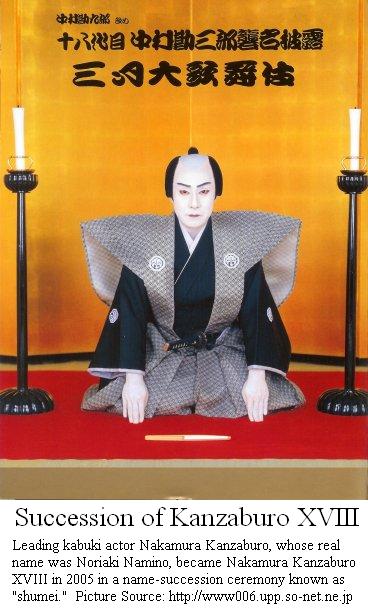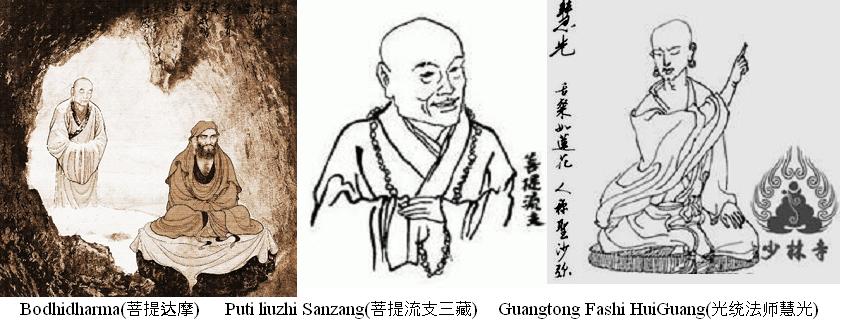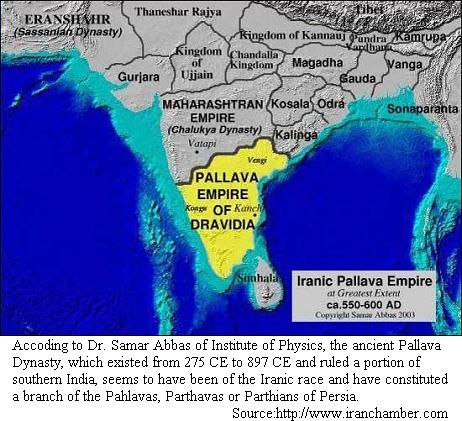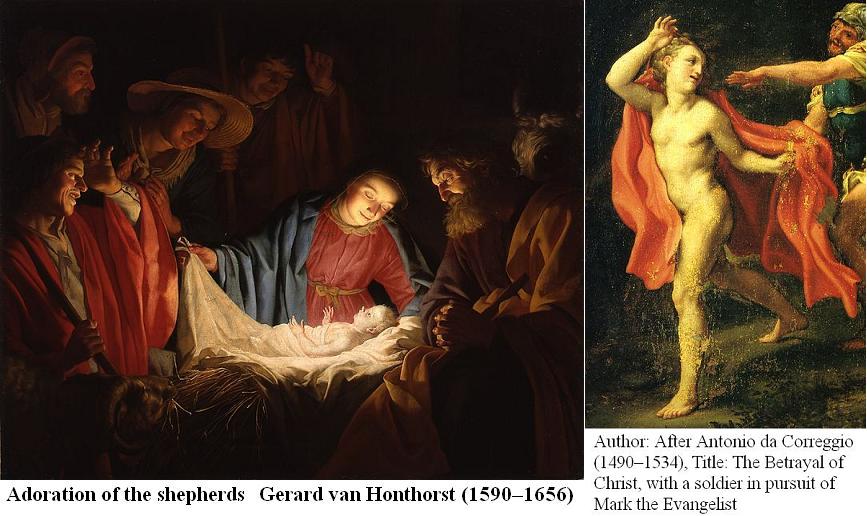Review:The baptism of the Holy Spirit (Succession)
Now while he was in Jerusalem at the Passover Feast, many people saw the miraculous signs he was doing and believed in his name. (John 2:23) These people did not believe in his flesh but in his name, the spirit of truth. One, who believes in his name, can directly ask God in his name and will receive whatever he asks and his joy will be complete. (John 16:23-26) All men have had the Holy Spirit since the creation of the world.(John 15:27) Jesus knew it without man's testimony. Thus he did not need to entrust his Holy Spirit to men. (John 2:24-25)

Indian philosopher Nagarjuna (150?-250?) described this theory in his book "The Treatise on the Middle Way" and stated: "Dharmas (phenomena) are born of causes and conditions. I say they are thus empty. They are also called the temporary name, and that is also the truth of the Middle Way." In this world, individual events and things perceived by men through their five senses are merely provisional names given to each process of changes. Thus they are called the temporary name. And they are not substantive, so, called emptiness. However, the truth only exists as universality within individual events and things and does not exist without individual appearances. Therefore, Nagarjuna called it the truth of the Middle Way.
During Wei, Jin, and Southern and Northern Dynasties period (220-589 CE) of China, Hui-wen (550-577), the founder of Tiantai Buddhism, who read this verse and at once perceived the triple truth, namely, the truth of emptiness, the truth of temporariness and the truth of mean, explained as follows. These three - emptiness, temporariness and mean - penetrate one another and are found perfectly harmonized and united. One should not consider the three truths as separate but as the perfectly harmonious three fold truth.
The succession to the sixth patriarch
A tonsure ceremony of a young man was held at Faxingsi temple (法性寺) in Guangzhou, Guangdong province of China on the 15th of January in 676 AD, the third year of ShangYuan period of Emperor GaoZong (高宗) of the Tang dynasty. And a grand ordination ceremony was held on the 8th of February inviting famous Buddhist discipliners from nationwide and abroad such as ZhiGuang (智光) of Xian (西安), HuiJing (慧静) of Suzhou (苏州), TongYing (通应) of Jingzhou (荆州), QiDuoLuo (耆多罗) of Central India and Master Tripitaka MiDuo (蜜多) of Turkestan as a master of ordination, a master of karma (羯磨), a professor, a teacher of precepts and a witness of ordination respectively. In this way, the succession to the Sixth Patriarch of Zen Buddhism since Bodhidharma had transmitted the Mind Seal to China by the lad named Huineng (惠能) was realized.
Fulfillment of prophecy by two Master Tripitakas
Dating back from this 256 years ago, in 420 AD, during the era of Emperor Wu of Song in the Wei, Jin, and Southern and Northern Dynasties period, Indian Master Tripitaka Gunabhadra (求那跋陀罗394-468) prophesied, "A Bodhisattva in flesh will receive the full precepts at this altar in the future," when he built a Buddhist ordination platform here and 176 years ago, in 502 AD, that is, the first year of TianJian, the era name of Emperor Wu of Liang Dynasty, another Indian Master Tripitaka ZhiYue (智药) planted two Bodhi trees here and prophesied, "A Bodhisattva in flesh will be coming here and will preach under the trees and save abundant sentient beings after 170 years later. He will be the savior of the world conveying the Mind Seal of Buddha." Now their prophecies were fulfilled. And even today, after over a thousand years, the seven-story tower built in the precincts of the temple is said to still contain HuiNeng's hair.
Although HuiNeng was only a young (39 years old) street hawker of firewood in the town of Guangzhou until then, he shoved many high priests aside and suddenly succeeded to the Sixth Patriarch of Zen Buddhism in China. Therefore, the tonsure and ordination ceremonies of HuiNeng are said to have been a landmark incident in the history of Chinese Buddhism, just like, Jesus, the son of a Nazarene carpenter, suddenly appeared alone on the banks of the Jordan River and was baptized by John the Baptist (Mark 1:9/ Mat 3:13) and made a debut to the religious society of Jerusalem with testimony of John in Bethany. Jesus, too, is said to have been in his mid thirties at that time (Luke 3:23).
By the way, the Passion of Jesus, the son of a Nazarene carpenter, was prepared carefully by all parties concerned, including the high priest, the royal family and the Roman governor, in order to establish the Jerusalem Church as an umbrella organization supervising the church movement by overseas gentile believers and different Jewish factions in the country under the leadership of James the Less, the brother of Jesus, who had been certified as the legitimate lineage of the High Priest representing both the Davidic royal family as well as a priestly Aaronic Lineage. It would have been very difficult to complete all procedures during only net one day before the Passover, without prior coordination of all parties concerned, such as investigation, trial, execution and burial of Jesus in charged by the high priest, the king and the Roman governor before sunset. Moreover the Primitive Church was established at the meeting place of the Essenes adjacent to the residence of the High Priest Caiaphas, barely one and half month after the Crucifixion and about three thousand new believers including Gentiles were added to the church that day. (Acts 2:1-41) Thus James succeeded to the first bishop of Jerusalem Church. However, neither James nor Paul, but Peter, a fisherman from the Sea of Galilee, was canonized as the first Pope of Roman Church. Incidentally Galilee was populated and governed predominantly by the Itureans, who were called Ismaelites (Arab) and were mass converted to Judaism during the Hasmonic era, according to Mr. Shlomo Sand, Professor of history at Tel Aviv University. It might have been for this reason that the disciples of Jesus did not know many of the rules and precepts of Judaism. They were blamed for their behavior not only by the Pharisees but also by the disciples of John the Baptist.
Bodhidharma's visiting China
According to the Jingde Records of the Transmission of the Lamp (景德传灯录, published 1004 CE), Bodhidharma, who left South India to travel to China during the era of King YiJian (异见王the nephew of Bodhidharma) and arrived in Guangzhou, China in 527 AD, met Emperor Wu of Liang Dynasty on the 1st of October of the year. Bodhidharma was 150 years old and Emperor Wu was 64 years at that time.
The Emperor declared, "Since my accession to the throne, temples have been built, scriptures copied, and monks saved without number. What kind of merit has been accumulated?" Bodhidharma replied, "No merit." Again the Emperor asked, "What is the first principle of the holiness?" Bodhidharma replied, "Clear and void, no holiness." The emperor did not match him. Finally, Bodhidharma crossed the Yangzi River and came to the kingdom of Wei.
He lived in the Shaolin temple on Mount Song in Henan Province, where he faced a wall for nine years, transmitted the Mind Seal to Huike (慧可), DaoYu (道育), ZongChi (总持nun), DaoFu (道副) and other disciples and passed away at his about 160 years old, according to tradition. He is said to have been caught up in a coup d'etat of Northern Wei (the mass executions at Heyin 河阴的大屠杀) and also said to have been poisoned.
General Erzhu Rong (尔朱荣) refused to recognize the young emperor, Yuan Zhao (元釗), who Empress Dowager Hu (胡太后) had placed on the throne after she poisoned her son Emperor Xiaoming (孝明帝). Erzhu overthrew her and put Emperor Xiaozhuang (孝庄帝) on the throne. Erzhu ordered Empress Dowager Hu and her imperial officials to his camp at Heyin (河阴) near Luoyang (洛阳) and slaughtered them, killing more than 2,000 of them

According to some Buddhist Scriptures, such as "Lidai fabao ji (历代法宝记: Record of the Dharma-Jewel through the Ages)," Bodhidharma was poisoned six times. One day, Bodhidharma said to HuiKe, "I came to China because I saw people here with the Great Vehicle Root Nature. Now I have transmitted the Dharma and am ready to complete the stillness." Then he met his death calmly when he was attempted the sixth poisoning. However, there are somewhat strange points in this tradition. Both of Puti liuzhi Sanzang (菩提流支三藏) and Guangtong Fashi HuiGuang (光统法师慧光), who are said to have envied Bodhidharma and to have tried to poison him six times, were prominent high priests of those days. Puti liuzhi Sanzang was a scholar of Yoga practice of Mahayana Buddhism from North India and a translator of Buddhist scriptures. HuiGuang, who had studied under the Venerable BaTuo of the Shaolin Temple, absorbed in the secrets of Hinayana Buddhism Meditation, the School of Vinaya, Huayan Sect and so on and had a lot of disciples. In contrast, Bodhidharma faced a wall for nine years in a cave behind Shaolin Temple and only got a few disciples. The two famous high priests seem to have had little reason to be jealous of the barbarian obscurity, Bodhidharma. More over, there are some points in the story which is convincing to us to believe that Bodhidharma knowingly ate the meal mixed with poison each time. The two high priests gradually increased the amount of poison contained in the vegetarian meals to offer him. Bodhidharma is said to have spat out the poisonous food on a rock every time and the rock changed its color caused by the miasma. Thus the three might have collaborated and have tried to develop new treatment method using India's traditional systems of medicine like Ayurveda, Unani, Homoeo and Siddha and Chinese Medicine.
Furthermore, it is almost impossible to believe that a man, who was 150 years old, not only crossed seas all the way from South India and arrived in Guangzhou of Southern China but also traveled further more than 1,200 km to Mount Song in the outskirts of Luoyang located in the central plains of China. Because recently, Buddhist scriptures which have a lot in common with "The Two Entrances and Four Practices《二入四行论》," a text traditionally attributed to Bodhidharma, were discovered from the ruins of Dunhuang (敦煌), the theory argued that Bodhidharma came to China through land route rather than sea route is considered to be more likely.

"The Record of the Buddhist Monasteries of Luoyang《洛阳伽蓝记》", one of the principal Chinese sources, describes Bodhidharma as a Persian from the western region (西域). The western region refers to Central Asia but may also include the Indian subcontinent. However, Bodhidharma is often referred as "The Blue-Eyed Barbarian (碧眼胡僧)" in Zen texts. If he came from India should have been called "The Blue-Eyed Indian (碧眼天竺僧)."
On the other hand, an Indian tradition regards Bodhidharma to be the third son of a Tamil Pallava king from Kanchipuram and to particular characterize as a dark-skinned Dravidian. Tanlin (昙林506–574), too, describes Bodhidharma as the third son of a great Indian king in his preface to "the Long Scroll of the Treatise on the Two Entrances and Four Practices."
According to Dr. Samar Abbas of Dept. of Physics, Utkal University and Institute of Physics Bhubaneswar, India, the ancient Pallava Dynasty, which existed from 275 CE to 897 CE and ruled a portion of southern India, seems to have been of the Iranic race and have constituted a branch of the Pahlavas, Parthavas or Parthians of Persia.
The origins of Southern subitism and Northern gradualism
Perhaps Zen Buddhism was brought into China through both land and sea routes during the Wei, Jin, and Southern and Northern Dynasties period by multiple evangelists. Then Northern Gradualism Sect which emphasized "practice" advocating the doctrine of "Zen and scriptures are one" and Southern Subitism Sect which advocated "freedom of scriptures" and "no establishment of words and letters" flourished in the central plains of China under the rule of Northern Dynasties and Southern China ruled by Southern Dynasties respectively. And later, Emperor Wu of Liang Dynasty, who is known as the most enthusiastic royal patronage of Buddhism among the southern dynasties, and Bodhidharma's confrontation seems to have been arranged as a spectacle to adorn the first page of Zen Buddhism history in China.
In the central plains of China, where several dynasties established by different Non-Chinese ethnic groups rose and fell, because rulers often implemented policies to abolish Buddhism, there was no significant development of Zen Buddhism from the first ancestor Bodhidharma, the second patriarch HuiKe, the third patriarch SengCan and untill the fourth patriarch DaoXin (580-651). However, when Tang dynasty unified the whole of China, especially after Emperor GaoZong's empress Wu ZeTian (武则天627?-705) seized real power of court of Tang dynasty, Zen Buddhism grew rapidly under the fifth patriarch HongRen (601-675) in the central plains too.
Wu ZeTian's Promotion of Buddhism
Wu ZeTian appointed many talented people, regardless of their clan or title, actually dared to appoint lower-ranked people, in order to make up for her inferiority in the court. While Li clan, which had established Tang Dynasty, was proud of the descendant of LaoZi (Founder of Taoism) and prioritized Taoism than Buddhism but Wu ZeTian changed this custom in the court, too, and prioritized Buddhism over Taoism. She actively promoted Buddhism.
Wu ZeTian's intention might have worked behind the succession to the Sixth Patriarch of Zen Buddhism, who should play a role to unify Northern Gradualism Sect and Southern Subitism Sect, by Huineng, a young street hawker of firewood in the town of Guangzhou, too. Yuquan Shenxiu (玉泉神秀 606?-706), who was HuiNeng's senior stablemate, both receiving HongRen's mind seal, received the devotion of Empress Wu ZeTian as the founder of Northern Gradualism Sect. He recommended Emperor ZhongZong (中宗:the son of Emperor Gaozong and Empress Wu) to listen HuiNeng's lecture as the latter was the legitimate successor of HongRen. But HuiNeng is said to have not come up to the court in the capital ChangAn using his illness as an excuse despite ShenXiu's repeated persuasion. It may be mentioned that just around this time Fazang (643–712), a Sogdian, one of tribes in western region of China, became a priest in obedience to the Imperial order and succeeded to the third patriarch of the Huayan school of Buddhism.
He lectured to Empress Wu ZeTian and other high ranked officials on Huayan philosophy in the court.One more thing may need to be mentioned that the patriarch of Zen Buddhism in China is only up to the Sixth Patriarch, there is no Seventh or Eighth Patriarch. After the Sixth Patriarch HuiNeng, not only Northern Gradualism Sect and Southern Subitism Sect but also five Houses and seven Schools (五家七宗) lined up and Zen Buddhism grew explosively. Therefore, even with the tremendous power of Tang dynasty' s Emperor, it seems to have become impossible to let someone succeed to the Seventh Patriarch.
Virgin Birth
By the way, the Fifth Patriarch Hongren's surname is said to be "Zhou." But this is his mother's surname and there is no record regarding his father. According to the legend, he was a reincarnation of a hermit of Mount Potou who had crawled into his mother's womb.
When the Fourth Patriarch DaoXin settled down in Mount Potou of HuangMei-xian in modern Hubei Province, a hermit, the lord of the mountain, also asked him to become his pupil. DaoXin answered him, "I cannot allow a hundred over years old hermit to become my pupil. However if you are reborn and ask me again, I may accept you." The disappointed hermit went down the mountain to the village. He saw a girl washing by a brook. He remembered what DaoXin had said, "If you are reborn and ask me again, I may accept you." Then he immediately asked the girl "Can you put me up?" The girl replied, "If you do not mind a ragged, please put up." Then hermit cheekily crawled into her womb. When the girl's belly became bigger, her parents put away their nefarious daughter. In the fulness of time, she was delivered of a boy. People called the boy, who begged from door to door with his mother, "nameless brat." When this boy became seven years old, DaoXin saw him on the street of HuangMei-xian and asked the boy, "What is your name?" The boy answered, "My name is Buddha nature." DaoXin fell in love with this boy and asked his mother to let the boy become his disciple, without the faintest idea that the boy was a reincarnation of the hermit of Mount Potou. The mother consented to his request to take her son as his disciple. Then the boy became a monk at HuangMeiShan Dongshan temple. This nameless brat is said to have later become the Fifth Patriarch Hongren.

<To be continued>
What is "Baptism with The Holy Spirit"?
According to the dialectic of the Gospel of John,
【Thesis】"A man can possess eternal life through accepting testimony of the Son of man and being baptized by him." (John 5:24)
【Anti-thesis】But "The one who comes from the earth cannot accept the testimony by one from heaven."(John 3:32)
How then can a man possess eternal life?
【Synthesis】"If you want to be baptized with the Holy Spirit, you can just go back to the word which was with God in the beginning (John 1:1) and certify that God is truthful. (John 3:33)"
When he said, "You are Huichao," Zen Master Fayan thrusted vivid Self in Huichao in front of his eyes.
Purchase here
○One world:
Your Comments / Unsubscribe
SEAnews Twitter
SEAnews Messenger
SEAnewsFacebook
SEAnewsGoogle
SEAnews eBookstore
SEAnews eBookstore(GoogleJ)
SEAnews world circulation